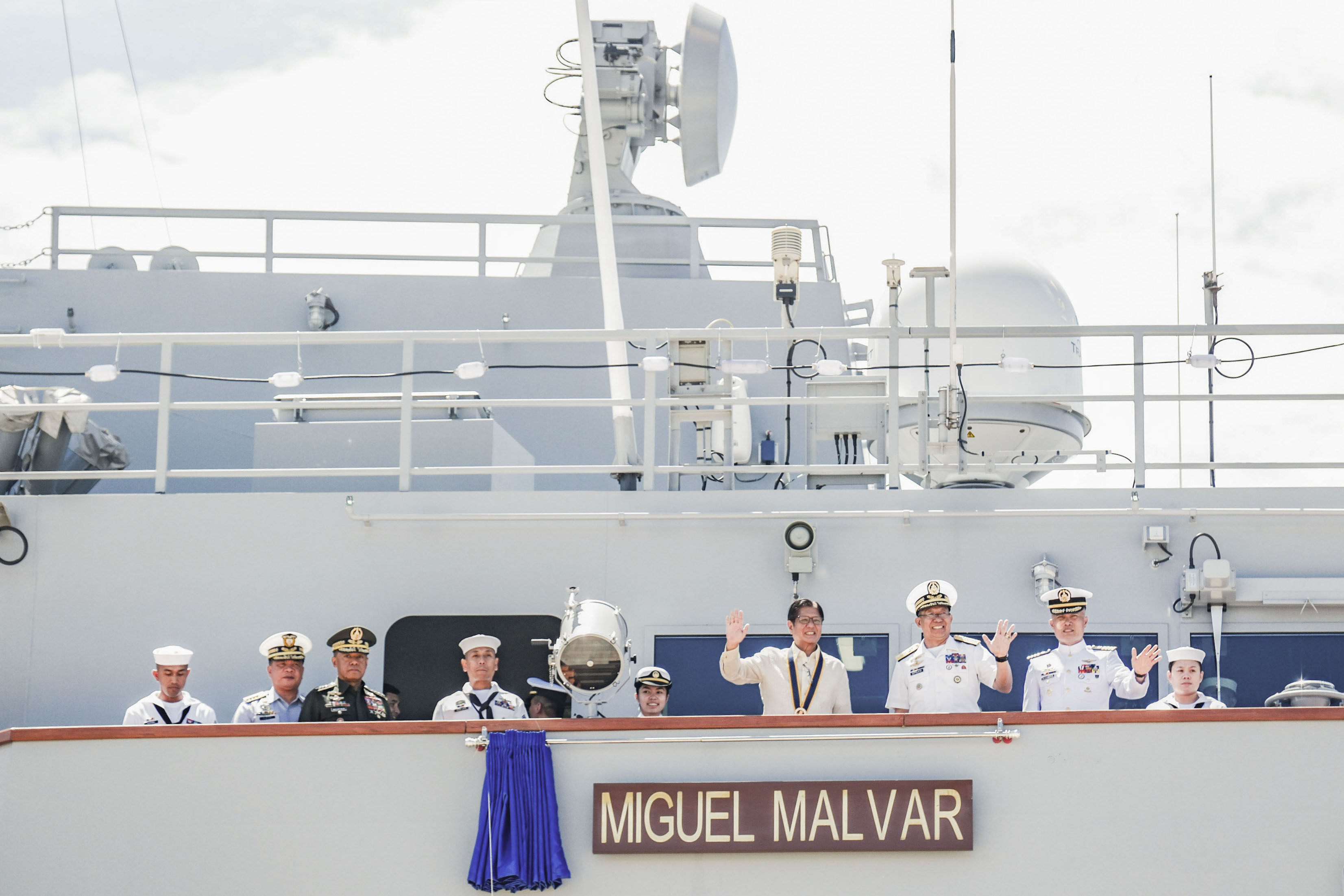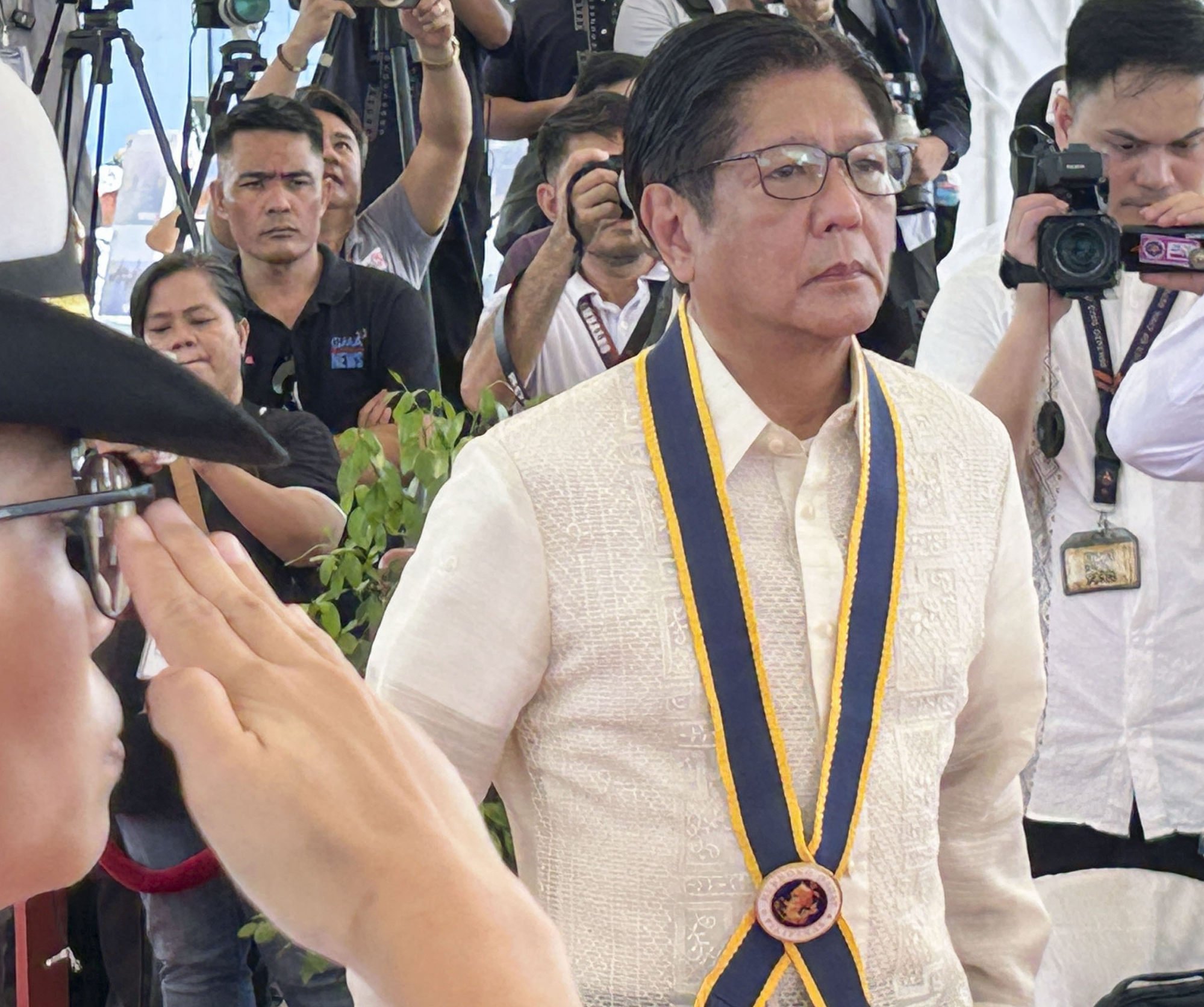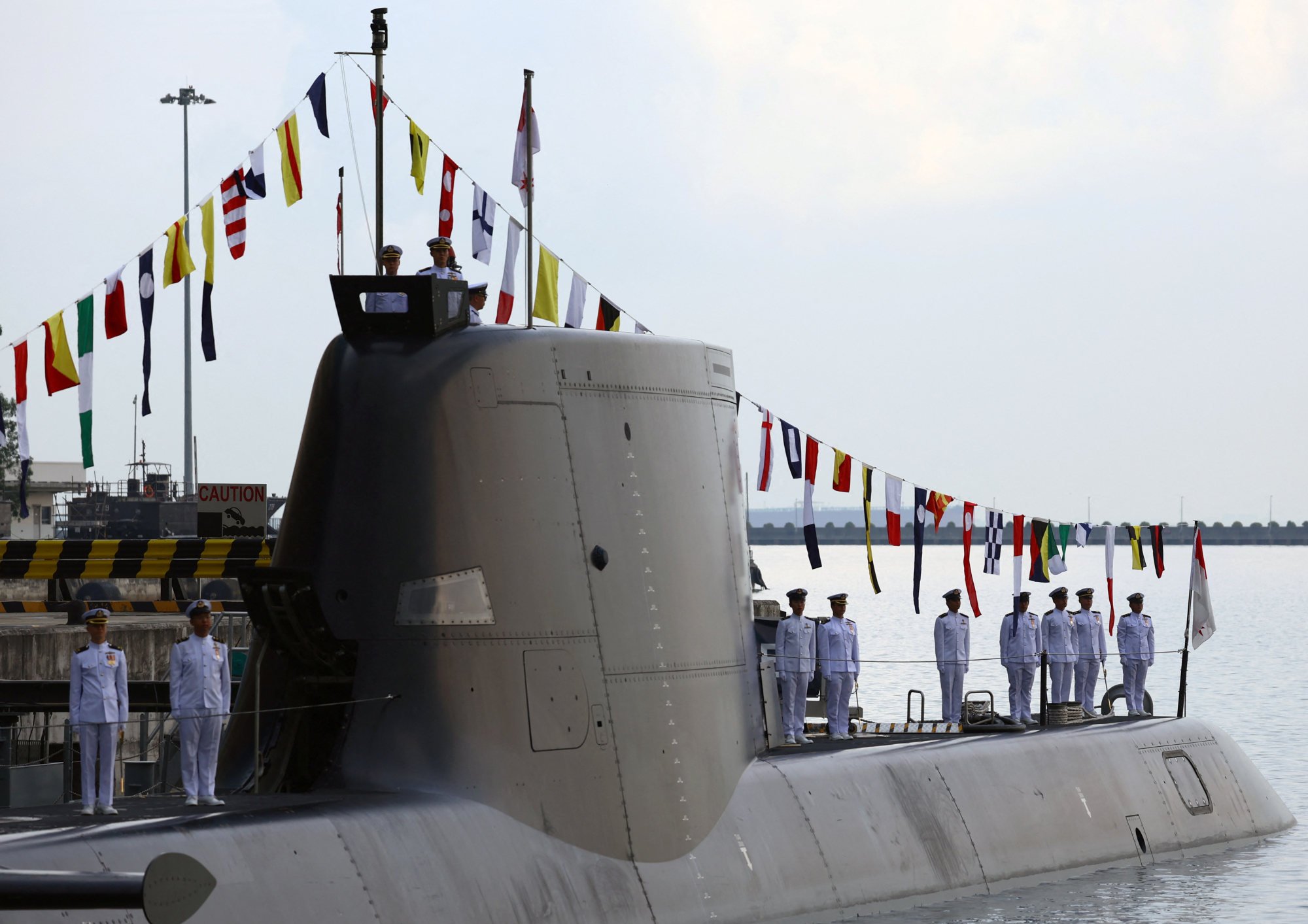South China Sea: Philippines flexes naval muscle with 2 new warships
The new Miguel Malvar-class ships can help Manila project strength if they are used as ‘part of a broader strategy’, experts say

On a windswept pier in Subic Bay, once the site of the United States’ largest overseas naval installation, Philippine President Ferdinand Marcos Jnr stood before a newly minted guided-missile frigate and declared that his country would “not surrender anything” in defence of its maritime sovereignty.
The commissioning of two naval vessels – including the 3,200-tonne (3,500-ton) Miguel Malvar – on the Philippine Navy’s 127th founding anniversary on Tuesday was more than ceremonial. It marked a bold signal of Manila’s intent to modernise its maritime capabilities and project strength in contested waters.
But the additions will prove meaningful only if they are paired with a cohesive strategy and deeper coordination with defence partners, analysts warn.
The Miguel Malvar is a guided-missile frigate, measuring over 100 metres (330 feet) in length and outfitted with a 76mm (3 inch) Oto Melara main gun, C-Star surface-to-surface missiles and Blue Shark anti-submarine torpedoes.
A sister ship, the Diego Silang, is set to be delivered later this year by South Korea’s HD Hyundai under a 28 billion peso (US$503 million) procurement deal signed in 2021.

Also commissioned was the Albert Majini, a high-speed patrol craft locally assembled under the navy’s Littoral Combat Force. The eighth vessel in the Acero-class series, it honours a fallen naval officer recognised for his gallantry during anti-piracy operations in the southern Philippines.
“We reaffirm our commitment to being responsible members of the international community, engaging in all matters diplomatically, and upholding the established principles of international law,” the president said, alluding to Manila’s efforts to navigate rising tensions with Beijing over disputed waters without provoking open confrontation.
China claims almost the entire South China Sea – including areas within the Philippines’ exclusive economic zone, known locally as the West Philippine Sea. In 2016, an international tribunal at The Hague dismissed Beijing’s sweeping maritime claims as having no legal basis, a ruling China has refused to accept.
Naval chief Vice-Admiral Jose Maria Ambrosio Ezpeleta described the new ships as part of a broader transformation of the Philippine Navy into a force capable of responding to “urgent challenges” at sea.
“Our readiness has become even more crucial. Our country’s future is linked to the security of our maritime domain.”
Analysts agree, however, that Manila’s modernisation efforts are unlikely to alter the regional naval balance without a coherent long-term strategy.
Vincent Kyle Parada, a former defence analyst for the Philippine Navy, said the acquisition of modern warships was only “one part of the equation”.
“You can buy platforms like frigates and submarines with advanced weapons and systems, but they’re not much use if there’s only a few of them,” he told This Week in Asia. “They need to make sense as part of a broader strategy.”
Muhammad Faizal Abdul Rahman, a research fellow at the S. Rajaratnam School of International Studies in Singapore, said the new vessels would bolster Manila’s ability to police its waters and demonstrate a more credible presence.
However, he warned that their deterrent value remained limited if deployed in isolation. “To create more impact, these vessels need to operate in an integrated manner with other military assets and in coordination with the Philippines’ network of defence partners,” he told This Week in Asia.
Since Beijing seized Scarborough Shoal in 2012 after a two-month stand-off with the Philippine Navy, Manila had made significant progress in modernising its naval capabilities, Parada said. At the time, the most advanced warships used were a pair of repurposed Hamilton-class cutters from the US Coast Guard.
When Marcos took office in 2022, the country’s Offshore Combat Force had just nine ships: three Jacinto-class corvettes, three Del Pilar-class patrol vessels, one Conrado Yap-class corvette, and two Jose Rizal-class frigates.
Parada said the arrival of two new Miguel Malvar-class frigates and six Offshore Patrol Vessels would nearly double the fleet to 17 by 2028 – excluding Acero-class patrol boats, Multi-Purpose Attack Craft, and future acquisitions under Re-Horizon 3.
Re-Horizon 3, a government initiative prioritising the upgrading of naval forces over the next decade, is part of Marcos’ US$35 billion allocation towards military modernisation in January last year.
“It’s through the acquisition of larger platforms like the … Miguel Malvar that the [navy] is looking to increase its presence in the South China Sea,” Parada said.
“Frigates are versatile warships. They can operate alone or as part of a squadron, depending on design specifications. That’s part of the capability requirements if they want to extend the country’s defensive depth past its littorals to its [exclusive economic zone].”
A regionally weak navy
Muhammad Faizal said Manila was known to have one of Southeast Asia’s weakest navies as it had had to focus its defence strategy and limited resources on internal security threats, which were a more immediate concern, over the past decades.
Other regional countries could build stronger navies as they had more favourable internal security and political landscape as well as better economic growth.
“The Philippines has a complex and challenging maritime domain comprising archipelagic waters and vast exclusive economic zone,” he said.
“Its current state of military modernisation could improve its ability to deter and respond to threats within its territorial waters. But it remains to be seen if its naval fleet is ready to deter more powerful actors operating in its exclusive economic zone, which are the Philippines’ primary concern.”
Parada said the Philippine Navy was on the path to becoming a “green-water navy” capable of operating beyond 100 nautical miles of its shoreline – but it still had a long way to go.
Indonesia boasts one of the world’s largest and most capable navies, often ranking fourth or fifth globally by most metrics, according to Parada. As the world’s largest archipelago, it faces a vast and porous maritime domain – making a strong navy a strategic necessity.
Vietnam typically ranks second in Southeast Asia with a robust fleet and the region’s largest submarine force. Its military hardware has consistently come from Russia, and previously, the Soviet Union.

Malaysia is the Philippines’ closest peer in naval capability. However, its navy struggles with an ageing fleet and appears slower in modernising, despite operating two submarines.
Singapore, on the other hand, despite having one of the smallest navies in the region, fields highly advanced platforms. Its Formidable-class frigates and Invincible-class submarines are unmatched on a platform-to-platform basis in Southeast Asia.
Parada acknowledged that Manila could never match China’s capabilities. China has the world’s largest naval fleet by hulls and is closing in on the US in platform and system quality.
“But I think what’s important to remember is that you don’t need to. Navies, and armed forces in general, need only meet the defence requirements of their respective states. They’re a means to an end. The more important consideration is how these limited resources will be used in the event of armed conflict and in countering grey-zone operations,” he said.
“Ukrainian naval operations in the Black Sea are a good example of a weaker force achieving operational successes against a superior one. That’s where all these things like strategy, doctrine and innovation come to play.”